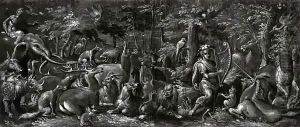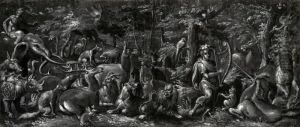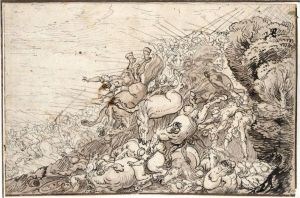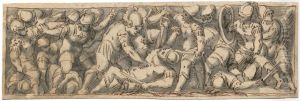Melchior Bocksberger Paintings
Melchior Bocksberger was an Austrian painter active during the Renaissance, born in the 1540s. Although exact details about his early life and training are scarce, it is believed he was part of the vibrant artistic scene that flourished in the Habsburg domains, which included modern-day Austria, parts of Germany, and beyond. His work is often associated with the later period of the Renaissance, a time when the artistic focus was shifting towards more naturalistic representations and an increased interest in the effects of light and shadow, as influenced by Italian masters.
Bocksberger's career is noted for its contributions to religious and secular art, with his oeuvre including altarpieces, portraits, and frescoes. His style reflects the transition from the Mannerist tendencies of the mid-16th century to the more baroque sensibilities that would dominate the 17th century. This stylistic evolution is evident in the dynamic compositions, the more realistic portrayal of figures, and the emotional depth of his religious scenes. Unfortunately, much of his work has not survived or is not well-documented, which has led to a somewhat limited understanding of his full impact on the art world of his time.
Despite the scarcity of surviving works, Bocksberger is known to have been quite active in Salzburg and other parts of Austria, where he received commissions from both the Church and secular patrons. His ability to blend the spiritual with the humanistic, a hallmark of Renaissance art, was highly admired. He was also noted for his skill in fresco painting, a demanding medium that requires the artist to work quickly and with great precision on freshly laid plaster.
Bocksberger's death in 1587 or 1588 marked the end of a career that was emblematic of the shifting artistic tastes of late 16th-century Europe. While not as widely recognized as some of his contemporaries, his work remains an important part of the study of Renaissance art in the Austrian region. His contributions to the development of baroque elements in painting foreshadowed the major shifts in European art that were to come in the 17th century. Despite the limited number of his works that have survived, Bocksberger is remembered for his technical skill, his ability to convey emotional depth, and his influence on the transition between the Renaissance and Baroque periods in art.




